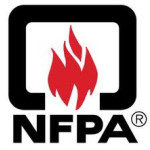- Industry: Fire safety
- Number of terms: 98780
- Number of blossaries: 0
- Company Profile:
Established in 1896, NFPA's mission is to reduce the worldwide burden of fire and other hazards on the quality of life by providing and advocating consensus codes and standards, research, training, and education.
A gas used as a fuel source, including natural gas, manufactured gas, sludge gas, liquefied petroleum gas-air mixtures, liquefied petroleum gas in the vapor phase, and mixtures of these gases.
Industry:Fire safety
A gas vent for venting listed Category II, III, and IV gas appliances.
Industry:Fire safety
A gas with an autoignition temperature in air at or below 54. 4°C (130°F).
Industry:Fire safety
A gaseous fuel occurring in nature and consisting mostly of a mixture of organic compounds, normally methane, ethane, propane, and butane. The calorific value of natural gases varies between about 26. 1 MJ/m3 and 55. 9 MJ/m3 (700 Btu per ft3 and 1500 Btu per ft3), the majority averaging 37. 3 MJ/m3 (1000 Btu per ft3).
Industry:Fire safety
A gas-fired cooking appliance for outdoor use only that is provided with a means of support by the manufacturer and is connected to a fixed gas piping system.
Industry:Fire safety
A gas-fired device that applies hot gas from the heater combustion chamber directly to a portion of the container surface in contact with LP-Gas liquid.
Industry:Fire safety
A gastight partition between two adjacent spaces, or two nonadjacent spaces, with no means of gas communication between the spaces.
Industry:Fire safety
A gastight recovery system comprised of equipment or devices that can be placed over a leak in a compressed gas container, thereby stopping or controlling the escape of gas from the leaking container.
Industry:Fire safety
A gastight recovery vessel designed so that a leaking compressed gas container can be placed within its confines, thereby encapsulating the leaking container.
Industry:Fire safety
